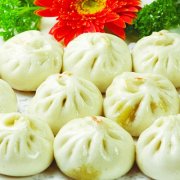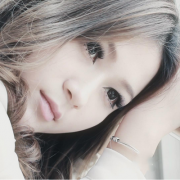Recommended Boutique ---Dragon and phoenix spend money in Ming and Qing dynasties
龙凤钱币始于后周,多为“龙凤呈祥”的龙、凤图案。龙、凤二物,或头对着,或头与尾相接,也有双龙背凤凰的,“龙凤呈祥”是一种吉祥之物。而花钱源于汉代,花钱在早期使用的时候主要是中国民间自娱自乐的一种玩钱,这种钱币由于不是流通钱,因此它的材质大都比较粗糙,中国民间把这种钱俗称为“花钱”。“花钱”虽然具有钱币的形态,但不作流通使用,是钱币中的“非正用品”。中国民间花钱的种类繁多,诸如开炉、镇库、馈赠、祝福、玩赏、戏作、配饰、生肖等等都要铸钱,这种“钱”,其实是专供某种需要的辟邪品、吉利品、纪念品。其中“吉语钱”是比较普遍的一类花钱。主要以“长命富贵”、“福德长寿”、“加官进禄”、“天下太平”等吉语为内容,这同时也反应了中国传统文化的渗透力。虽然花钱材质大都比较粗糙,但到了明清时期,由于皇宫内也开始铸造花钱,使“花钱”的发展达到了鼎盛,此时民间花钱也开始用上等的黄铜做材质。镂空花钱最早出现在南宋时期,是一种历史产物,本身已经很珍贵,而龙凤花钱又是历史和文化的结合产物,所以更加珍贵,有很大的收藏价值。
Dragon and phoenix coins began in the later Zhou Dynasty, and most of them are dragon and phoenix patterns of "dragon and phoenix Chengxiang". Dragon and phoenix two things, or head to head, or head to tail, there are double dragon back phoenix, "dragon and phoenix Chengxiang" is a kind of auspicious things. Money originated from the Han Dynasty, money in the early use of money is mainly a kind of play money for the Chinese people to entertain themselves, this coin is not circulation money, so its material is mostly rough, the Chinese people commonly known as "money". Although "money" has the form of money, it is not used for circulation and is "non-normal supplies" in money. There are many kinds of Chinese folk money, such as opening the stove, town library, gifts, blessings, toys, plays, accessories, zodiac signs, etc., to cast money, this "money" is actually for a certain need of evil products, auspicious products, souvenirs. Among them, "auspicious money" is a more common type of money. Mainly to "long life and wealth", "Ford longevity", "official into the Lu", "world peace" and other auspicious language for the content, which also reflects the penetration of traditional Chinese culture. Although the material of money is mostly rough, but in the Ming and Qing dynasties, because the royal palace also began to cast money, so that the development of "money" reached its peak, at this time, the folk money also began to use high-quality brass to make material. Hollowing money first appeared in the Southern Song Dynasty, is a historical product, itself is very precious, and dragon and phoenix money is a combination of history and culture, so more precious, there is a great collection value.

近期我公司征集了一枚明清龙凤花钱,重10g。此铜质明清龙凤花钱,有穿郭,外郭纤细,铸有内郭边。币面铸锦地回纹,内穿左侧为凤,右侧立龙,是为龙凤钱。龙凤造型削薄,显露娉婷风格,锦地设计虽使图案较繁琐,却也符合明清大众审美趣味。龙凤钱在当时用作婚礼压帐的礼钱,也喻示新婚美满,祈愿百年好合。不过,这种花钱数量较少。该钱双重圆郭、圆穿,一龙一凤首尾相接,龙身在祥云中穿行,若隐若现,龙鳞、尾部清晰可见。凤有冠,双翅展开,羽毛可辨,长尾飘逸。该钱龙飞凤舞,寓意龙凤呈祥。一条旋身而起腾云升飞、张口戏珠的龙和一只翩翩起舞的凤凰,此枚花钱传世黄亮,品项极佳,每一细处都栩栩如生,属于花钱佳品。在中国传统的吉祥图案中,“龙凤”是广大民众最喜爱的一种纹样,因此在古代各种器物上出现,屡见不鲜,钱币也不例外。龙凤花钱是民俗钱的一个分支,也是花钱里面的一个重要的题材,因为在中华文化里面龙、凤都是吉祥富贵的寓意,是中华文明的图腾,寄托着人们美好的愿望,我们在日常生活中间都会对有龙、有凤的这些图案寄于吉祥的内涵。整枚钱币布局巧夺天工,铸工精湛,古雅斑斓,包浆浑厚,锈色有明显的层次感,铸工粗狂,钱币的花纹线条流畅有神韵,为我国古代铸造工艺不可多得佳品。
Recently, our company collected a Ming and Qing dragon and phoenix money, weighing 10g. This copper Ming and Qing dragon and phoenix spend money, there are wearing Guo, outside Guo slim, cast inside Guo edge. The surface of the coin cast the brocade back pattern, inside the left side of the phoenix, the right side of the dragon, is for the dragon and phoenix money. The shape of the dragon and phoenix is thinned to reveal the graceful style. Although the design of Jin Di makes the pattern more complicated, it also conforms to the aesthetic taste of the Ming and Qing dynasties. At that time, Longfeng money was used as a gift money for the wedding, and it also symbolized a happy marriage and wished for a good union for one hundred years. But that spending is small. The money double round Guo, round wear, a dragon a phoenix head and tail meet, the dragon body through the clouds, looming, dragon scales, tail clearly visible. The phoenix has a crown, spread wings, discernible feathers, and a long, flowing tail. The money dragon flying phoenix, meaning auspicious dragon. A spinning and rising clouds, open mouth play beads of the dragon and a dancing phoenix, this money handed down to the yellow Liang, excellent quality, every detail is lifelike, belongs to the money of the good. In the traditional auspicious patterns of China, "dragon and phoenix" is the most favorite pattern of the general public, so it is common to appear on various ancient artifacts, and coins are no exception. Dragon and phoenix money is a branch of folk money, but also an important subject matter of money, because in Chinese culture inside the dragon, phoenix are auspicious and rich meaning, is the totem of Chinese civilization, the people's good wishes, we in the daily life will have the dragon, phoenix of these patterns sent to the auspicious connotation. The whole coin layout is exquisite, the casting is exquisite, the antique is gorgeous, the paste is thick, the rust color has an obvious sense of hierarchy, the casting is rough, the pattern lines of the coin are smooth and the charm is rare for the ancient casting process in China.
此龙凤花钱钱币状态佳,镂空花钱是采用透雕工艺,运用吉祥纹饰图案龙凤题材而铸造的一种花钱。它始于汉代,定型于唐宋,盛行于金元时期,至明清逐渐冷落。花钱也称压胜钱、厌胜钱、民俗钱等,是中国古代具有压胜、祈吉等文字和图案的“钱币”。不能作为钱币流通,主要用于佩戴、馈赠、赏玩、撒帐等。花钱的铸造较为随意,民间与官方均有铸造,形制各异,因此花钱的种类较多。从形制看,花钱主要分为镂空钱、实体钱。其中,镂空钱两面通透,古人也称玲珑钱或通花钱,两面不通透者称为实体钱。镂空花钱出现较早,南宋洪遵《泉志》中记述了一枚轻影钱,“右轻影钱,洞冥记曰:汉武帝升望月台时,暝望南端,有三青鸭宿台端。日色已暗,青鸭化为三小童,着青绮文襦,各握鲸文大钱五枚,置帝几前,身上影动,名轻影钱。”此钱透过钱体可以看到人影,应是镂空花钱。镂空花钱以图案纹饰为主,文字极少。图案题材丰富,多是表现吉祥的动物和植物等题材,如龙、凤、鱼、牡丹、莲花等。其中,龙纹花钱数量较多,形制多样,是镂空花钱中重要的一类。
This dragon and phoenix money coin is in a good state, hollow money is the use of transparent carving technology, the use of auspicious patterns dragon and phoenix theme and cast a kind of money. It began in the Han Dynasty, formed in the Tang and Song dynasties, prevailed in the Jin and Yuan dynasties, and gradually neglected in the Ming and Qing Dynasties. Money, also known as pressure Sheng money, hate Sheng money, folk money, etc., is a "coin" with characters and patterns such as pressure sheng and Qi Ji in ancient China. It can not be circulated as money, but is mainly used for wearing, presenting, enjoying, and spreading accounts. The casting of money is more casual, and both folk and official casting have different shapes and forms, so there are more types of money. From the shape point of view, the money is mainly divided into hollow money and physical money. Among them, hollow money is transparent on both sides, the ancients also called Linglong money or through spending, and the two sides are not transparent called physical money. Hollow money appeared earlier, Southern Song Hong Zun "spring Zhi" described a light shadow money, "right light shadow money, hole ghost said: when Emperor Wudi rose to the moon, the southern end of the night, there are three green duck bed table. The sun has been dark, green duck into three children, with the Qing Qi Wen Ru, each holding whale wen big money five, set the emperor a few years ago, shadow on the body, name light shadow money." This money can be seen through the money body, should be hollow money. Hollow spending is mainly decorated with patterns, and the text is very little. The motif is rich, most are auspicious animals and plants, such as dragon, phoenix, fish, peony, lotus and so on. Among them, the number of dragon spending is more, the shape is diverse, and it is an important class of hollow spending.

根据一些史料的记载,龙凤花钱应该是从唐朝的末年,五代时期开始出现在钱币上面的,就是在钱币背面铸上龙或者凤,有时龙或凤在一块,举个例子“天策府宝龙凤花钱”,它就是五代时期的,在这之后各个朝代都有龙凤花钱,比较普遍。龙凤花钱有各式各样不同的形制,有方孔圆钱的形制,有圆孔圆钱的形制,还有挂花。明清两朝龙凤花钱达到了高峰,发展的比较普及,比如明朝的正德通宝龙凤花钱,大家都耳熟能详品质也比较好,做的也大气,还有乾隆通宝的龙凤花钱,都是明、清时期龙凤花钱的代表。此枚龙凤花钱也是一枚典型的明清时期的花钱钱币。
According to some historical records, dragon and phoenix spending should be from the end of the Tang Dynasty, the five dynasties began to appear on the coins, that is, cast a dragon or phoenix on the back of the coin, sometimes a dragon or phoenix together, for example, "Tiancefu Bao dragon and phoenix spending", it is the five dynasties, after this each dynasty has dragon and phoenix spending, more common. Dragon and phoenix money has a variety of different shapes, there are square hole round money shape, round hole round money shape, and hanging flowers. The Ming and Qing dynasties dragon and phoenix spending reached a peak, the development of more popular, such as the Ming Dynasty Zhengde Tongbao dragon and phoenix spending, everyone is familiar with the quality is also better, do atmosphere, and Qianlong Tongbao dragon and phoenix spending, are representatives of the Ming and Qing dynasties dragon and phoenix spending. This dragon and phoenix coin is also a typical money coin of the Ming and Qing dynasties.
凤,最早见于甲骨文,其本义为远古祭师用来祭祀通神的完美神鸟,传说中的百鸟之王,头顶华冠,羽披百眼,形似今日孔雀;雄的称为“凤”,雌的称为“凰”,后引申为有圣德的人、乐器、音律等。龙的形象也起源较早。如河南濮阳西水坡遗址中, 发现了仰韶时期(距今 6400 年)用蚌壳摆放成的龙纹图案,龙首无角,龙身“S”形,龙鳞、爪、尾部俱全,造型生动 。龙是人们想象出来的动物,自然界中并不存在。龙是形象取各种动物之长,组合而成的神异动物。在长期的发展过程中,龙的形象逐步形成和演变,成为中国的神灵和最大的吉祥物。龙是雨神,也是四灵之首、百鳞之长,兼具神圣、吉祥、如意的寓意, 在民间有着深厚的群众基础。同时,龙也是皇权的象征和化身。古代皇帝自称真龙天子,太子称龙潜等,甚至龙纹也成了皇室的专用纹饰。不过,龙纹是吉祥的化身,也被允许应用于民间艺术。因此,龙纹成为中国皇家和民间共同使用的重要纹饰。钱币中出现龙纹始于汉代,如西汉武帝时期铸造“白金三品”。据《史记》 记载,“又造银锡为白金。以为天用莫如龙,地用莫如马, 人用莫如龟,故白金三品。”新莽时期“天凤货币钱”正面篆书“货币”二字,背面“天凤元年”四字,左右两边有四个龙形组成的图案。五代周世宗“周元通宝”花钱, 采取铜钱的样式和面文,背面则铸有龙凤图案。此后,龙纹在花钱中的使用日趋广泛、经久不衰,直至民国时期仍是镂空花钱的主要纹饰之一。龙纹花钱也被认为具有特殊的神力,可以起到趋吉避凶的作用。因此,古人通常将其作为饰物随身佩戴,或是作为祥瑞之物馈赠他人,满足了驱邪祈吉的愿望,龙纹花钱一直受到民间的欢迎。龙与其他祥瑞动物组合类花钱也是民间受欢迎的花钱,主要有龙凤花钱、鱼化龙花钱等。不过,这种花钱数量较少。所以此龙凤纹花钱既富有历史感又有美好寓意且存世不多,无疑是一件难得的宝贝。
Phoenix, first seen in oracle bone inscriptions, its original meaning is the perfect divine bird used by ancient priests to worship God, the legendary king of 100 birds, the head of a splendid crown, feathers of 100 eyes, like today's peacock; The male is called "phoenix", and the female is called "Huang", which is later extended to be a person, instrument, rhythm and so on. The image of the dragon also originated earlier. For example, in the Xishui Po site in Puyang, Henan Province, a dragon pattern was found in the Yangshao period (6400 years ago) with clamshell placed into the dragon head without horns, the dragon body is "S" shaped, and the dragon scales, claws and tail are complete, and the shape is vivid. Dragons are imaginary animals that do not exist in nature. Dragon is a combination of the image of all kinds of animals, the combination of supernatural animals. In the long process of development, the image of the dragon gradually formed and evolved, becoming China's god and the largest mascot. Dragon is the god of rain, but also the head of the four spirits, the length of a hundred scales, both sacred, auspicious, wishful meaning, in the folk has a deep mass foundation. At the same time, the dragon is also the symbol and embodiment of imperial power. The ancient emperor claimed to be the true dragon and the son of heaven, and the prince called the dragon hidden, etc., and even the dragon pattern became the special decoration of the royal family. However, the dragon pattern is the embodiment of good luck and is also allowed to be applied to folk art. Therefore, the dragon pattern became an important pattern used by both royal and folk in China. The appearance of dragon patterns in coins began in the Han Dynasty, such as the casting of "three products of white gold" during the reign of Emperor Wudi of the Western Han Dynasty. According to the Records of the Grand Historian, "They also made silver and tin into white gold." I think heaven is as good as a dragon, earth is as good as a horse, and man is as good as a turtle. Xinmang period "Tianfeng currency money" on the front of the seal character "currency", on the back of the "Tianfeng first year" four characters, left and right sides of the dragon composed of four patterns. The five dynasties Zhou Shizong "Zhou Yuan Tongbao" spent money, taking the style and face of copper coins, and casting dragon and phoenix patterns on the back. Since then, the use of dragon pattern in money has become more and more extensive and enduring, until the Republic of China period is still one of the main decoration of hollow money. Dragon spending is also believed to have special divine power and can play a role in seeking good fortune and avoiding evil. Therefore, the ancients usually wear it as a charm, or as a gift to others, to meet the desire to exorcise evil and pray for luck, dragon spending has been welcomed by the people. The combination of dragon and other auspicious animals is also a popular folk money, mainly dragon and phoenix money, fish dragon money and so on. But that spending is small. Therefore, this dragon and phoenix pattern money is rich in history and has a good meaning and not much in the world, is undoubtedly a rare baby.
以上藏品相关信息请与:四川尊古拍卖集团有限公司联系。
Please contact Sichuan Zungu Auction Group Co., Ltd. for information related to the above collectibles.




